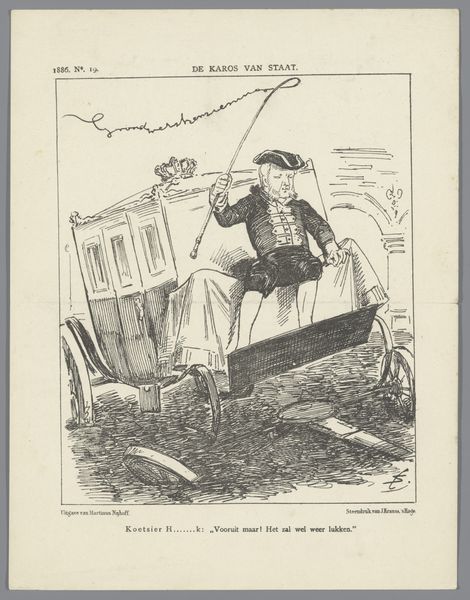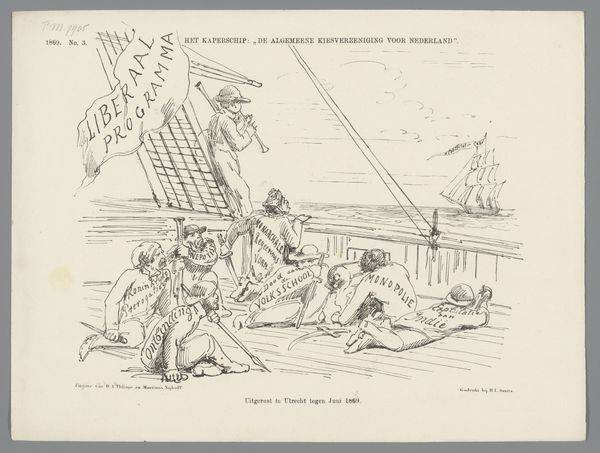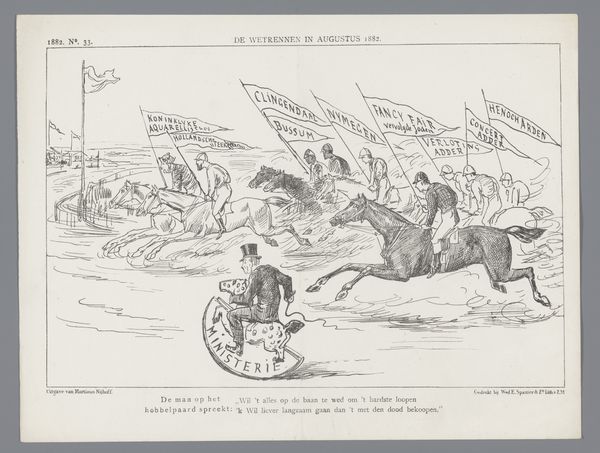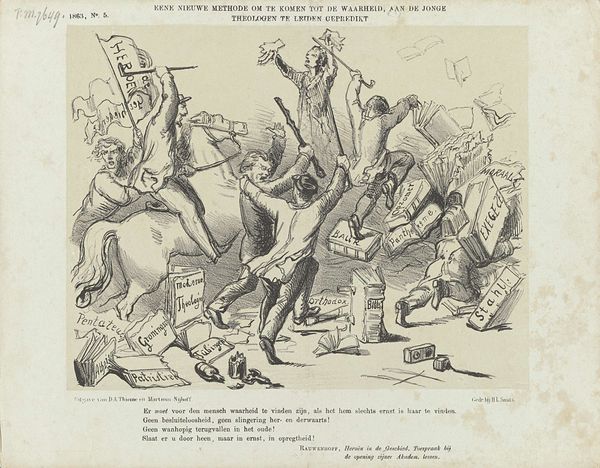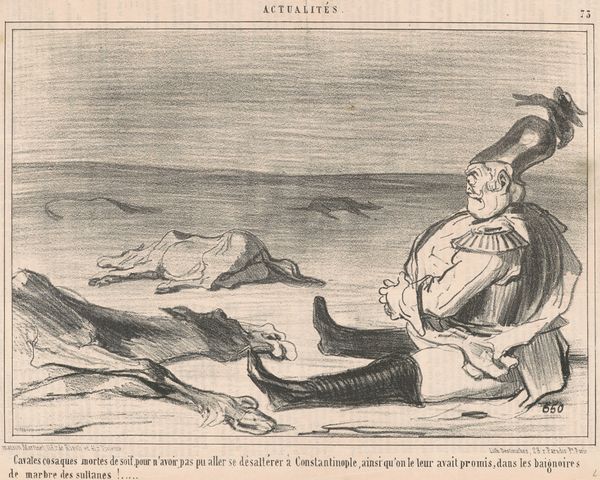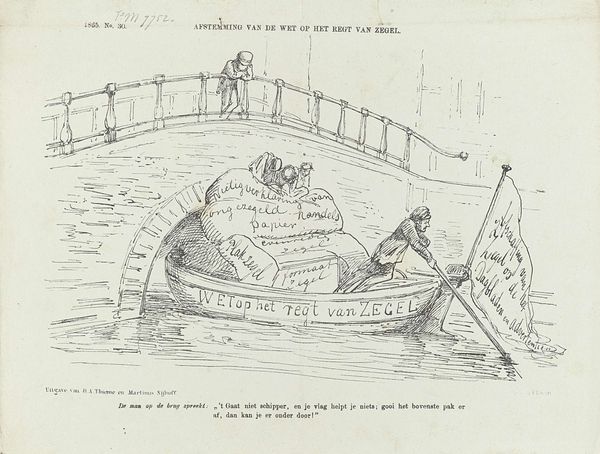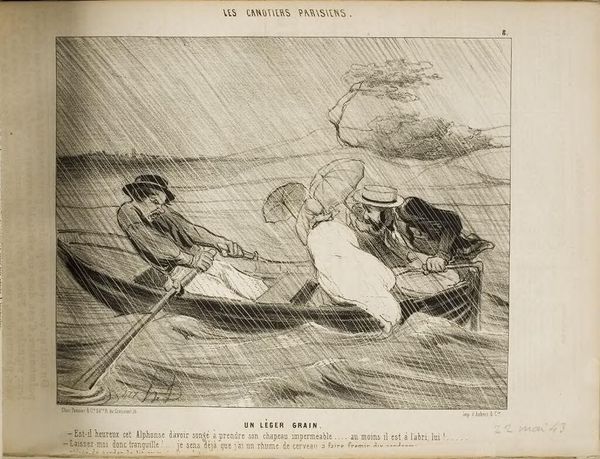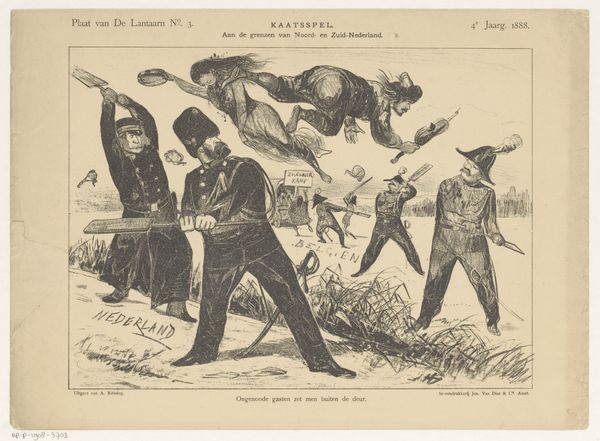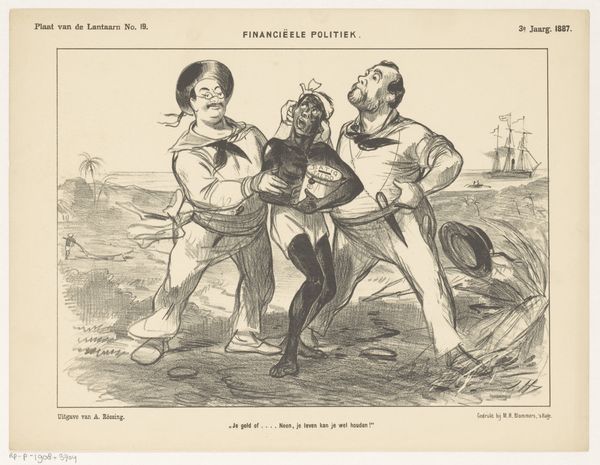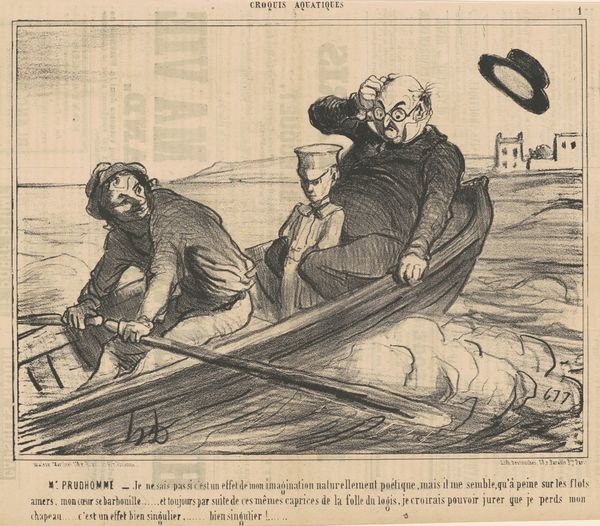
Dimensions: height 215 mm, width 275 mm
Copyright: Rijks Museum: Open Domain
This political print was made in 1866 by Johan Michaël Schmidt Crans using etching. It speaks to the shifting allegiances and the fracturing of the German Confederation. The image employs a symbolic vocabulary to critique the political situation. We see figures scrambling to disembark from a boat named "Deutsche Vaterland," or "German Fatherland," suggesting a rush to abandon a shared national identity. The tumbling figures, and the character carrying "Metal Lieken," or "Metal Coffins," point to the perceived dangers of remaining in the union. This was a period of intense political maneuvering, with leaders like Bismarck pushing for Prussian dominance and the exclusion of Austria from German affairs. Understanding this print requires us to look beyond the image itself, diving into the complex history of 19th-century German nationalism. Contemporary newspapers, political pamphlets, and institutional records can help us understand how such artworks challenged, or reinforced, the social and political norms of the time. Ultimately, this print reminds us that art is always embedded in a specific social and institutional context.
Comments
No comments
Be the first to comment and join the conversation on the ultimate creative platform.

